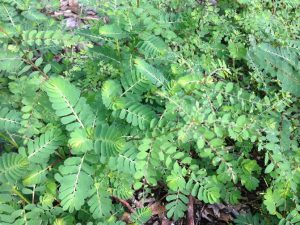
Figure 1: Chamberbitter, a common annual weed.
Credit: Mary Salinas, UF/IFAS Extension Santa Rosa County.
With daily rainfall occurring regularly, coupled with humid temperatures, summer annual weeds have had a mighty boost in growth. Chamberbitter, Florida pusley, sedge and oxalis are just some examples of the many weeds that are exploding across our landscape.
Chamberbitter (Phyllanthus urinaria) is found as north as Illinois and as west as Texas, but thrives in lower southeastern states. It’s a headache for homeowners as well as pasture managers. The foliage resembles that of the mimosa tree (Albizia julibrissin) and can be confused with the native mimosa groundcover, known as powderpuff mimosa (Mimosa strigillosa). This plant grows upright and develops a long taproot. Wart-like seeds can be found on the underside of the branch.
Florida Pusley (Richardia scabra L.) also known as Florida snow or Mexican clover, has recently blanketed landscapes in the Panhandle with white flowers. It’s a persistent weed that moves quickly.
Sedges and sedge-like plants (Cyperus ssp.), known as kyllinga, are species that emerge in late spring and thrive in summer months in warm, moist climates. Excessive irrigation or areas with poor drainage create a very hospitable environment for these weeds. Sedges are annual grass-like plants have an elaborate flower-bearing stems. Yellow and purple nutsedge are the most common species. Kyllingas have smaller leaves and are less vertical. Sedges and kyllingas are fast spreading, and reproduce through seed and rhizomes, or underground tubers.
Oxalis or yellow woodsorrel (Oxalis stricta) have heart-shaped lobes and have a bright yellow flower. Oxalis reproduces by seed and have a narrow “okra-like” seed pod.
Figure 1: (L to R) Chamberbitter, Pusley, Sedge, Kyllinga & Oxalis.
Credit: Stephen H. Brown, UF/IFAS Extension Lee County
What about control? Some cultural control methods are hand removal and mowing frequently to offset the life cycle, but these practices alone will most likely not solve the problem. There are many broad spectrum herbicides that can be used to control these weeds with good results, but you must be persistent. Some are season long applied products. However, most effective products need to be applied in cooler temps than we have now. Consecutive days of temperatures of less than 90 degrees would be optimal. Applying the chemical otherwise will most likely harm the turfgrass. Be aware, some productions will injure or kill centipede and St. Augustine, but are safe to use on other turfgrasses like bermuda, bahia and zoysia. Be sure to read the label and follow the directions and precautions.
Another option is non-selective herbicides, like glyphosate, which can be used in thick patches or for spot treatment. When using a selective herbicide, remember to protect turfgrass and other plants from spray drift or any contact, especially regarding ornamental plants and trees.
Contact your local county extension office for more information.
Supporting information for this article is from the following online publications:
Clemson Cooperative Extension publication: “Chamberbitter”, Bulletin HCIC 2314: http://www.clemson.edu/extension/hgic/pests/pdf/hgic2314.pdf
UT Institute of Agriculture document, “Nutsedge and Kyllinga Species” by Mathew T. Elmore, James T. Brosnan and Gregory K. Breeden: http://www.tennesseeturfgrassweeds.org/Lists/Fact%20Sheets/Attachments/23/W260updated2015.pdf
UF/IFAS EDIS publications: “Yellow Woodsorrel (Oxalis) Biology and Management in Turf” by J. Bryan Unruh, Ramon G. Leon, and Darcy E. P. Telenko: http://edis.ifas.ufl.edu/pdffiles/EP/EP38500.pdf
“Weed Management Guide for Florida Lawns” by J. Bryan Unruh, Ramon G. Leon, Barry J. Brecke, and Laurie E. Trenholm: http://edis.ifas.ufl.edu/pdffiles/EP/EP14100.pdf
UF/IFAS Extension is an Equal Opportunity Institution.
- The Sunshine State is the Perfect Place for Sunflowers - July 20, 2025
- Why Are Sand Dunes & Sea Oats So Important? - March 20, 2025
- How to Care for a Gift Plant - December 5, 2024

